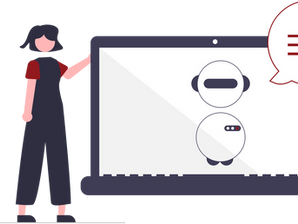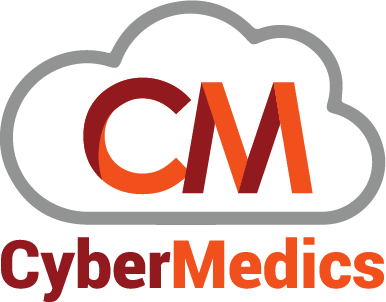
4 Types of Business Process Automation: Examples + Setup guide
Did you know that 52% of people would rather sit in traffic for two extra hours every day than give up the automation tools that make their life easier?
That’s the world of business process automation for you, where robots do your dirty work, and you can finally put your feet up (on your desk, that is). You might see automating business processes as a cold and robotic process, but let us tell you, it’s so much more than that. Think of it as hiring a personal assistant who never takes a sick day, never complains, and never asks for a raise.
Sounds like a dream, right? Well, dream no more, because in this blog post, we’re going to show you the different types of business process automation that will turn your business into a well-oiled machine.
So sit back, grab a cup of coffee (or tea, we don’t discriminate), and prepare to be amazed.
Why is automation in your business so important?
If it isn’t clear already, a 2021 Zapier report on the state of business automation that we linked earlier revealed some insane benefits to automating recurring processes.
9 out of 10 workers say that automation has improved lives in the workplace. That’s huge. From faster processes to more accurate data, automation is the key to success in business today.
1 in 5 say that automation increases the accuracy and efficiency of their work.
63% say using automation has helped them fight work burnout, and 65% say it makes them less stressed. When you replace tedious manual tasks with automated solutions, your business will thrive.
Companies lose 20 to 30 percent in revenue every year due to inefficiencies, according to market research firm IDC.
That’s why it pays to find the right automation solution for your business. Let’s look at some of the most popular types of business process automation.
1. Rule-Based Automation
Are you tired of doing the same tedious tasks over and over again? You’re going to love rule-based automation.
Also known as “if-then” automation, this system to automate business processes is based on a set of predefined rules, and is triggered by certain events or conditions. For example, if a customer places an order on your website, the rule-based automation system would automatically sends a confirmation email to that customer.
The rules are set up by the user and can be as simple or complex as needed. The system then follows these rules to automate tasks, making repetitive and time-consuming tasks much more efficient.
Use cases of rule-based automation
Rule-based automation can be used in a variety of industries and situations. Some examples include:
In e-commerce, rule-based automation can be used to automatically send out shipping confirmations and tracking information to customers
Email filtering: Automating the process of sorting and categorizing emails based on specific keywords or phrases in the subject line or body of the email.
Spam filtering: You can set rules to identify and delete spam emails before they hit your inbox.
News aggregation: Collect news articles from various sources and categorize them based on predefined rules, like topic, date range, and/or industry.
Data validation: You can check data for accuracy and completeness based on predefined rules like checking for typos, duplicates, and more.
How to set up rule-based automation
Identify the task or process that you want to automate. This could be something like sorting emails, responding to customer inquiries, or updating a spreadsheet.
Define the rules that will govern the automation. These rules should specify the conditions under which the automation will be triggered, as well as the actions that will be taken. For example, a rule for sorting emails might say, “if the email subject contains the word ‘invoice,’ move it to the ‘invoices’ folder.”
Choose business process automation tools that can help you implement the rules you’ve defined. There are many options available, depending on the task you’re trying to automate – some examples include IFTTT, Zapier, and Automate.io for web-based automation.
Set up the automation using the chosen software or tool. This will typically involve creating a new automation or “recipe” (in the case of IFTTT), configuring the triggers and actions, and testing the automation to make sure it’s working as expected.
Once the automation is set up and working correctly, you can begin using it to automate the task or process you identified in step 1.
Overall, rule-based automation can be a great solution for automating repetitive tasks and increasing efficiency. However, it’s important to carefully consider the specific needs of your business and whether rule-based automation is the right fit before implementing it.
2. Artificial Intelligence (AI) Automation
If you’re looking for an automated system that can “think” and make decisions on its own, then you might want to consider AI automation.
Also known as cognitive automation or machine learning, AI automation involves using computer algorithms to learn from data and identify patterns in order to automate tasks. For example, a chatbot powered by AI could be used to answer customer inquiries, while a machine learning algorithm could be used to automate online searches or product recommendations.
AI automation has the potential to revolutionize the way we do business, as it can automate complex tasks that would otherwise require human intelligence.
Use cases of AI automation
Predictive maintenance: Using AI to predict when equipment is likely to fail, so that maintenance can be scheduled before a breakdown occurs.
In financial processes, AI automation can be used to streamline loan approvals, credit scoring, and identify and flag suspicious financial transactions.
In healthcare, it can be used to diagnose illnesses and recommend treatments
Cybersecurity: Using AI to detect and respond to potential cyber threats and vulnerabilities.
In retail, you might use it to personalize product recommendations or pricing.
How to set up AI automation
Setting up AI automation requires a few more steps than rule-based automation. Here’s an overview of the entire process:
Again, you’ll want to start by identifying the task or process you want to automate. This could be something like product recommendations, credit scoring, or image recognition.
Gather the data you’ll need for training the AI algorithm. This can include things like customer data, images, or text documents that are relevant to the task you’re automating.
Choose a bpa software tool designed for AI automation – some popular options include TensorFlow and Microsoft AzureML.
Train your AI algorithm using the data you collected, which involves feeding the data into the software tool and allowing it to learn from it.
Test the AI algorithm and adjust it as needed until it is working correctly. Once everything is set up, you can begin using your AI automation system to automate the task or process you identified in step 1.
AI automation has the potential to automate complex tasks and increase accuracy and efficiency in decision-making. But it’s important to carefully consider the cost and complexity of setting up an AI system before diving into it. By understanding the types of business automation available, you can make a more informed decision about which one is right for your business.
3. Workflow Automation
While rule-based automation automates tasks based on predefined conditions and actions, and AI automation utilizes computer algorithms to learn from data, workflow automation focuses on automating entire processes.
Essentially, it streamlines your workflow by creating digital systems that manage the steps of certain tasks or core processes. For example, you could use workflow automation to create an automated onboarding process for new employees, or an order fulfillment system that automatically sends orders to customers.
Use cases of workflow automation
Workflow automation can be used for a wide variety of tasks, including:
Human resources: Automating the recruitment process, from posting job listings to sending offer letters.
Supply chain management: Automating the process of tracking inventory levels and ordering new stock. As an example, our team created a user-friendly Materials Management System for Collins Aerospace, which provided precise and up-to-date information on all material quantities, expiration dates, and their locations. This system was designed to streamline the process of managing materials for businesses.
Marketing and sales: Automating the process of lead generation and nurturing leads through the sales funnel.
Project management: Automating the process of tracking project progress and assigning tasks to team members.
How to set up workflow automation
Setting up workflow automation requires a few basic steps:
Identify the process or task you want to automate – this could be something like onboarding new employees, product order fulfillment, or marketing campaigns.
Choose business process automation software designed for streamlining workflows – again, some popular options include Zapier and IFTTT.
Create your automated workflow using the software tool, which involves mapping out the different steps of the process and connecting them together in the software.
Test your automated workflow to make sure it is working correctly, then deploy it and start using it for real tasks and processes.
Workflow automation can be a great way to save time on tedious or repetitive tasks, allowing you to focus your energy on more important to-dos.
4. Robotic Process Automation (RPA)
Robotic process automation (RPA) is the use of software robots to automate and streamline mundane, repetitive tasks. It’s often used to automate processes that involve multiple steps or require a high level of accuracy and consistency.
Unlike rule-based automation, which relies on hard-set rules and conditions, RPA utilizes artificial intelligence (AI) to learn from data and adapt its behavior as needed – in the same way that a human user would. This means that RPA robots can improve in accuracy over time, becoming more efficient at completing the tasks they are assigned.
And of course, this is different from workflow automation, which automates processes in their entirety – while RPA focuses on individual tasks or steps.
Use cases of RPA
Back-office automation: Automating the process of handling manual and repetitive back-office tasks such as data entry and processing.
Compliance and auditing: Automating the process of monitoring and enforcing compliance with regulations and standards.
OCR and document processing: Automating the process of extracting data from images and scanned documents.
To set up an RPA, you’ll need to choose a software tool designed for RPA – some popular options include UiPath, Blue Prism, and Automation Anywhere. You’ll then need to create your RPA bots using the software, which involves mapping out the different tasks or steps in the process you want to automate and connecting them together in the software.
Looking to automate some stuff? We can help.
When evaluating which type of business automation is right for your organization, it’s important to consider the types of tasks you need to automate and what level of complexity is required. You may even find that your business needs a combination of workflow automation and RPA to achieve your desired results.
At CyberMedics, automation is our specialty. We’ll sit down with you to understand your business, identify bottlenecks, and tailor a custom automation solution for your unique requirements. Get in touch today for a consultation on how we can help you automate and streamline your processes.
Regardless of which type you choose, automating key processes can help you save time and money while increasing efficiency. So take the plunge – explore the different types of business automation available and find out which one will best serve your needs.
Good luck!
